|
Home
Up
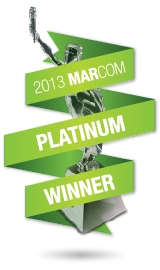
Marcom Award
2007-2008-2009
2010-2011-2012
2013-2014

Videographer Award
2007-2008-2009
2010-2013-2015
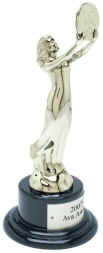
AVA Award Winner
2007-2008-2009
2010-2011-2012
2013-2014-2015
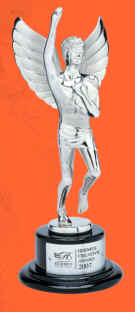
2008-2009-2010
2011-2012-2013
2014
Hermes Creative
Award Winner

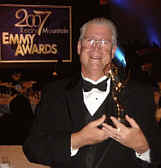
Ed
Sharpe / CouryGraph Productions
Glendale Daily Planet / KKAT-IPTV 2007 EMMY®Award Winner
2007
Rocky Mountain Region Emmy® Award Winner for Breaking News/ Continuing
Coverage
FIRST
IN GLENDALE!

Berkeley Film Festival
Grand Festival
Pioneer In
Television Award
2011
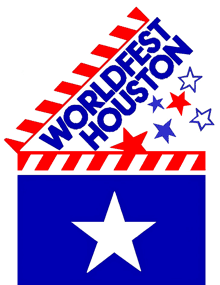
Remi Award Winner
Worldfest Houston
2009 - 2010 -2011

2009 EMPixx Awards
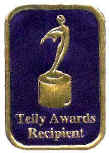
Telly Awards 2006-2007-2008-2009-2010

2008 & 2009
Communicator Awards
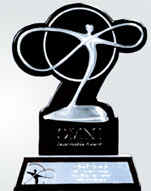
Omni Intermedia Awards
2007-2008-2009

Millennum Awards
2006-2007-2008
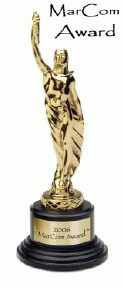
Marcom Award
2007-2008-2009
2010-2011-2012
2013-2014
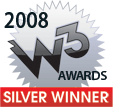 
W3 Media Awards
2008/2009
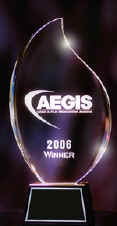
2007/2008/2009 Aegis
Finalists and Winners

Accolade Award Winner
2007-2008-20010
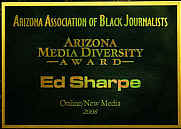
Arizona Assn. of Black Journalists Diversity Winner
2008/2009
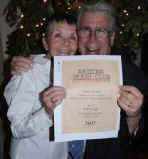
Arizona Press Club Winner
Ed Sharpe,
The Glendale Daily Planet:
Use of Online Media
"Cesar E. Chavez 2007"
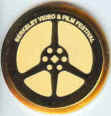
Berekeley Film Festival
2006-2007-2008-
2009-2010-2012
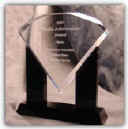
Media Achievement Awards
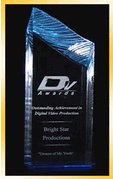
2008/09 Finalists and Winners - DV Awards

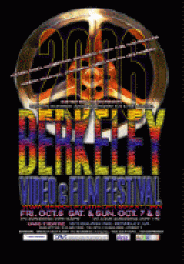
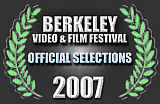
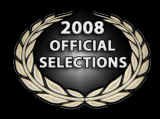
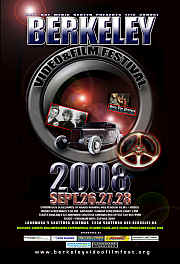

CouryGraph
Productions
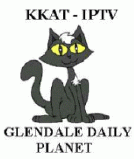


CALIFORNIA
HISTORICAL RADIO SOCIETY
IS PLEASED TO HONOR
EDWARD
A. SHARPE
WITH THE
CHARLES D. 'DOC' HERROLD
AWARD FOR
OUTSTANDING ACHIEVEMENT IN
THE PRESERVATION AND DOCUMENTATION OF
EARLY RADIO.
BY
THE BOARD OF DIRECTORS, 1992:

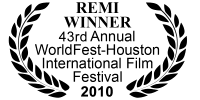
| |
|
WESTMARC
and The West Valley Chamber
Alliance
Governor Jan Brewer Annual Luncheon
Leadership from the
West Valley - February
26, 2010
11:00 a.m. Registration
12:00 p.m. Greeting
Art Othon, EI Bravo Restaurants
Chairman, WESTMARC
Pledge of Allegiance
Invocation
Jack Lunsford President/CEO, WESTMARC
12:05 p.m. Lunch
12:30 p.m. Welcome
The Honorable Elaine Scruggs Mayor,
City of Glendale
12:35 p.m. Introduction of Governor
Jan Brewer Don Smith President,
SCF Arizona
Governor Jan Brewer's Address The
Honorable Jan Brewer Governor,
State of Arizona
1:00 p.m. Conclusion of
program/Acknowledgements
Jack Lunsford President/CEO,
WESTMARC
Watch Intro, Mayor Scruggs and Gov, Brewer and
others...
Watch
Gov. Brewer segment only
|
Mayor Elaine Scruggs 2010 State of the City address
2010
Good afternoon. Thank you for joining us today and thank you for your continued interest in the city of Glendale and your support for our efforts.
I want to take a moment to thank the Chamber's board of directors for providing me the opportunity to present my State of the City Address at this event. I wish you success in all your endeavors in the year ahead.
This year the economy is the subject foremost on everyone's mind. As I met with our citizens a few months ago in my Community Conversations series, the topic everyone wanted to hear and talk about was how the City of Glendale was being impacted by the downward spiral of our national and state economy. They wanted to know what we were doing in response to the unprecedented and continued loss of revenues and how our actions would affect them.
As members of our business community, you are equally if not more interested in this same topic. As owners and representatives of businesses doing business with the City of Glendale, how we are doing most likely has an impact on how you are doing.
With that in mind, today's program will be a State of the City presentation that candidly explains the interwoven topics of municipal financing and economic development.
Joining me will be three individuals who are integral to what we have accomplished, what we are working on right now, and how we will reach our goals and objectives in the near and long-term future.
First you will hear from Art Lynch who served the citizens of Glendale as our city's Chief Financial Officer for 24 years. Now in private practice, Mr. Lynch guides Glendale's long-term financial strategies as a consultant under contract with our city.
Following Mr. Lynch will be Ed Beasley, who has served the citizens of Glendale as our City Manager since January 2002. Mr. Beasley oversees all city operations and works closely with the City Council in implementing our goals and policy directives.
Following Mr. Beasley will be Jim Colson, Deputy City Manager for Community Development. Mr. Colson oversees Glendale's Planning, Building Safety, Engineering, and Economic Development Departments as well as our Downtown Redevelopment efforts and our Glendale Airport.
Before my special guests talk about the present and future, I would like to spend some time looking back. To truly understand how we reached the point we are at now and how we are poised to go forward, we need to understand all that we achieved in the decade just concluded.
It was a decade in which we realized economic growth . . . new jobs . . . capital investments . . . new community amenities and city services . . . new world-class entertainment venues . . . new business opportunities . . . an expanded role in regional leadership
and a new identity.
Our accomplishments surpassed even our own most ambitious expectations.
Those accomplishments and Glendale's astounding emergence in the metropolitan region came about as a result of our community stakeholders citizens, businesses, education partners, private-sector partners, civic leaders, and others having a shared vision on how we could make Glendale a better place and then having the trust in us to help turn that vision into reality.
As a result of our community's determination, we developed into a destination city known nationally and internationally. This has put Glendale into a competitive position better able to withstand the difficulties that will be plaguing cities for a few more years.
The late, great Green Bay Packers coach Vince Lombardi once said: "Individual commitment to a group effort . . . that is what makes a team work, a company work, a society work, a civilization work." And it's that individual commitment to a group effort that has made Glendale prosper over the last decade. Through group effort, we have been able to demonstrate our ability to improve the way our city grows while still retaining our "home-town values."
Long before Jobing.com Arena, Westgate , University of Phoenix Stadium or Camelback Ranch Stadium were words in our daily vocabulary, our elected officials, city planners, engineers, public safety officials and others were identifying the capital investments in infrastructure that would be needed in order to support the new commercial development we all wanted to attract.
Understanding the magnitude of our capital investments in infrastructure is key to understanding Glendale's ability to diversify our economic base, withstand the current turbulence in financial systems worldwide, and retain high ratings from bond investment companies.
Infrastructure is universally defined as roads, utilities, water, sewage and other basic physical systems essential for enabling productivity in the economy.
For cities, making investments into its infrastructure is part of the capital accumulation required for economic development.
Economic development is the increase in the standard of living for a population. Its scope includes the process and policies by which a nation or a state or, in our case a city, improves the economic and social well-being of its people.
Going back more than two decades, Glendale's elected and appointed leaders have sought to prepare our city for future opportunities by developing long-range goals and identifying the community investments that would be needed to put planning into action.
Identification of needed capital investments into infrastructure is just the first step in building a city's foundation for economic development. Funding is needed to actually make those capital investments. Funding authorization must be given by voters in bond elections.
Our residents deserve so much credit for our city's accomplishments and successes during the past decade. In November 1999, they approved $411.5 million in bond requests. In May 2007, our voters approved $218 million of bond requests.
By their votes, our residents expressed their willingness to earmark funding for essential services such as flood control, water and sewer facilities, streets, and public safety buildings and equipment ---- and for economic development and job creation. Our residents' approvals told us they believed in the need for capital investments in infrastructure and amenities. And they told us they were willing to pay for those investments through their property taxes.
The variety of capital improvement projects authorized in those bond elections were the products of our residents' ideas, dreams, needs, and wishes expressed during community visioning sessions. At those public meetings, our residents spoke about building community pride, creating an identity of our own and attracting more businesses and jobs.
At your places on the tables are handouts highlighting many of the capital improvement projects the City of Glendale completed in the past decade ---projects that were made possible by our citizens' votes in the two bond elections.
It is important to see the depth, breadth and cost of these projects that represent significant investments in our future. These projects show our commitment to providing amenities that improve our residents' quality of life. These projects affirm our obligation to ensure our residents' essential services will always be met. These projects demonstrate that we facilitate improvements in today's neighborhoods and also respect and preserve our historic buildings.
It is also important to talk about what is being done day in and day out in our city to serve our residents and businesses.
It is easy to take our city's services for granted and not think too much about what it takes for them to reach our homes and businesses.
For example, you probably are not aware that there are over 997 miles of water mains and 710 miles of sewer mains within Glendale's 57 square miles. If laid end to end, these would stretch from Glendale to Los Angeles and back ---- twice over.
These water and sewer mains, just like our water and wastewater treatment plants, must be rebuilt and expanded in size from time to time.
During the last decade our water treatment capacity has been expanded from 54 million gallons per day to 95 million gallons per day.
Our wastewater treatment capacity has nearly tripled from 4.3 million gallons per day to 11.5 million gallons per day.
Costly equipment is added annually in order to meet ever-changing federal and state water treatment and sewer discharge requirements.
There are more than 19,000 streetlights in operation throughout our city.
There are 190 traffic signals citywide.
These are just a few of the services that our city absolutely cannot do without, but their construction and upgrades come with big price tags that result in quite a bit of debt for our city.
Debt is quite a hot topic these days. We face it in our personal lives for our mortgages, children's education, health expenses, and more. As businesses you deal with debt to purchase supplies or inventory or pay for your buildings. Arizona has piled up quite a bit of debt lately by selling state-owned buildings which they will buy back with interest over a number of years.
I know some are concerned about the City of Glendale's indebtedness. Often our arena or Camelback Ranch stadium are thought of as being the only reasons our city has debt payments to make each year. You might have noticed that our sports and entertainment facilities are not shown on the handouts at your tables. I asked that they be omitted so that I could have this chance to tell the facts of how our investment in infrastructure was required to achieve the burst of economic development for which we are now so well known.
The projects you see listed on the handouts represent our collective investments in meeting Glendale's immediate needs at the time the bonds were sold --- and also our investment in preparing Glendale for its best possible future.
These capital investments benefit everyone now and will continue to do so for years to come. To our citizens, this equates to a better quality of life . . . and to our businesses and future partners, it means greater opportunities for even more success.
Because of these capital investments, we have been able to seize opportunities that started coming our way --- opportunities which have allowed us to create a more viable economy than Glendale ever had in the past.
But it is fair to ask just how we manage to pay for all of these new city projects and keep our very good bond ratings? To explain the strategic planning and fiscal management integral to Glendale's investment in a successful future, I would like to introduce Mr. Art Lynch.
Art Lynch remarks.
Ed Beasley remarks.
Jim Colson remarks.
CLOSING REMARKS
Thank you Art, Ed, and Jim for providing your insights into all that is being done to keep Glendale Going Forward.
Time and again, our city has shown imagination, resilience and fortitude. We have fulfilled our promise of working towards our community's vision . . . and we did it during one of the most difficult times in our nation's history.
Early in the past decade our nation was the target of terrorist attacks. Those attacks wreaked havoc on our country's financial institutions and pushed our local and national economies into immediate decline. And, unfortunately, the same decade ended in the midst of the Great Recession, which has impacted all of us in this room in one way or another. But through all the obstacles we kept Glendale moving forward.
Our recent investments in Glendale's western area have served as magnets, pulling in new, quality development. They function as a spring board for investments by the private sector. The results are more jobs for our residents and an increased tax base that helps maintain excellent city services for our entire community.
For many years cities in our region relied on residential growth for their economic base. That approach worked pretty well during Arizona's population boom years. But the recession has forced everyone to acknowledge that our local and state economies must be diversified.
The capital investments made in Glendale over the last decade have given our city a head start.
We've created vibrant destination and employment centers. The activity at those centers will continue to attract more business and commerce.
Our capital investments have made it possible for Glendale to become the go-to place for major concerts and mega sporting events, including the Super Bowl, the BCS championship football game, the Fiesta Bowl
and ------------------------- is everyone ready for "Destruction in the Desert"?
Destruction in the Desert is the name World Wrestling Entertainment has given to Wrestlemania 26 which will take place in University of Phoenix Stadium on March 28. We are all proud to have been chosen for this event which will bring over 100,000 visitors from around the world to what is considered the Super Bowl of the professional wrestling.
And there will be plenty for those visitors to do while they are here in Glendale for Wrestlemania.
Both the Los Angeles Dodgers and the Chicago White Sox will have home games at Camelback Ranch-Glendale.
The playoffs-bound NHL Coyotes will have a home game in Jobing.com Arena.
The Grammy-Award winning Black Eyed Peas 2010 tour will come to our arena just a couple days after Wrestlemania 26.
Now we know that Don Rinehart got his ringside seats early for Wrestlemania. Isn't that right, Don? But the tickets are almost all gone.
So if any of you miss out, you will be happy to know Paul McCartney will be performing at Jobing.com Arena that same night.
Destruction in the Desert and Sir Paul McCartney --- both in Glendale the evening of March 28.
Is there anything more that needs to be said to prove Glendale Arizona is now a premier sports and entertainment destination?
Yesterday I learned that 15 of the top 20 grossing concerts in 2009 came to Arizona. 11 of those 15 concerts played at our own Jobing.com Arena here in Glendale.
The concerts, the teams, the trade shows, conferences, and conventions are contributing greatly to Glendale's economy.
All of the venues --- and the commercial development they have attracted to our city --- have made the hospitality industry a key revenue generator in Glendale for the very first time.
A pretty amazing fact is that Glendale was the only city in the Valley that experienced in increase in hotel occupancy in 2009 compared to the previous year.
March was our busiest month ever due to spring training baseball season at Camelback Ranch.
Prior to creating our sports and entertainment district, Glendale had only 441 hotel rooms in our entire city. Since building our arena, we have almost 1,500 hotel rooms. These include the 320 rooms at Glendale's first luxury property the four-diamond Renaissance Glendale Hotel and Spa which opened in 2007.
And, we are very happy to report that the Renaissance is already sold out for the four days leading up to WrestleMania.
These are real life examples of how our capital investments and fiscal management have led to our ability to create a new industry in Glendale --- the tourism industry ---- and it is helping our city weather the current economic downturn.
Glendale's entry into the tourism industry actually began in the early 1990's and it began right here in downtown Glendale when we created the Catlin Court Historic District.
The new overlay zoning spurred restoration of homes in Catlin Court to their original historic character and integrity for re-use as tea rooms and shops. The downtown store owners decided to join in the effort. Thus began Glendale's recognition as the Antiques Capital of Arizona. Little did we realize then, Glendale's Dining District had also begun.
Of course, the next order of business was to find a way to bring more people to Glendale to see our Old Towne and Catlin Court shops. What better way to do that than to host exciting and unique events? So began our signature festivals.
In doing some research into tourism for my remarks today I came across a "Brief Guide for Communities and Enterprise Developers" written by Mr. Bob Glover.
Mr. Glover wrote, "Somewhere centuries ago a community decided to celebrate, and a festival was born. Vendors sensed that people would gather and be in a mood to buy their wares. Townsfolk realized that visitors from afar would need places to rest. Someone knew enough to organize the event and, if that person was a visionary, he knew that revelers would pay to watch the sun go down, that is if accompanying food and music were provided.
Visitors beat new paths to the community. Paths turned into roads. Vendors decided that the festival was sustainable, so they stayed on, calling the place where they gathered to do business the market. The community now had a commercial center. Dwellings that offered hospitality became inns and eating-places. The sun was reliable in its setting. This was the place where tourism was born.
The model described has not changed over time. It is a simple model of tourism development."
The Guide did not provide any information about Mr. Glover and I have never heard of him before. But it sure sounded like Mr. Glover has been to Glendale.
Our signature festivals, which are produced by our own Glendale Marketing and Special Events Department staff, began in earnest in 1994. They now bring over a half million visitors to downtown Glendale every single year.
One of the reasons this Civic Center was built by the City of Glendale was to help promote tourism in our city and, in particular, our downtown. This building opened in December 1999. The demand for space was greater than we could accommodate so in 2006 the Civic Center Annex was created out of what was previously a Wells Fargo Bank building.
Today, our Civic Center hosts almost 60,000 people annually for non-City related functions. By the way, this facility is being honored this week for once again ranking in the top five for meeting facilities of its size in the entire state of Arizona.
In 2000, the City of Glendale purchased the four-story bank and office building across from Murphy Park and created a Visitors Center. Staff and volunteers at the Center help hundreds of thousands of visitors find their way throughout both the Old Towne and Catlin Court Districts. They also give information about other Glendale sites of interest such as Manistee Ranch, Sahuaro Ranch Park, our public art, our Paseo Racquet Center, and, of course, our Sports and Entertainment District venues.
Tourism and visitor demand has reached the point where we are now moving forward in creating the Glendale Convention and Visitors Bureau or CVB.
The fundamental mission of a CVB is the promotion of a destination by increasing visits from tourists and business travelers, which in turn generates overnight lodging and increases dining and shopping revenues. Having a Convention and Visitor's Bureau is the next logical step in our city's development.
While preparing to speak to you today, I started trying to estimate how many visitors come to Glendale each year --- to get a clearer idea of just how much of an impact tourism really has for our city. The numbers are quite surprising.
The Cardinals averaged 62,000 in attendance at each of their 2009 games --- which gives a total of 682,000.
The Fiesta Bowl added at least another 65,000.
The NHL reported attendance of 609,907 at Coyotes home games in 2009.
The Cactus League reported attendance of 228,726 at Camelback Ranch home games in 2009.
That comes to 1,585,633 people in Glendale to attend sports events.
You may be surprised to know that besides Coyotes and Cardinals games, Jobing.com Arena and University of Phoenix Stadium host an average of 175 other events each year. Some of those events cover multiple days.
I don't have figures for attendance at those events but I think it would be fair to estimate another quarter million people came to Glendale for those 175 events.
And we shouldn't forget about Cabela's, the World's Foremost Outfitters, a destination attraction in its own right. Cabela's averages 15,000 paying customers per week. Each paying customer is part of an average group of 2-1/2 people. This means Cabela's brings an average of approximately 40,000 people through their doors each week.
I already spoke about the half million people who come to Glendale for our signature festivals.
And the 60,000 who come to Glendale for events at this Civic Center.
And then there are the conferences, seminars, meetings, trade shows, and other events that are held at our Conference Center in the Renaissance Hotel.
Unfortunately we can't even begin to estimate the number of folks who come here for business, for family visits, for youth sports tournaments, and a myriad of other reasons. But even without those numbers we can be sure more than 4,000,000 people come to Glendale every year to attend specific events.
These tourists and visitors are staying in hotels in Glendale, eating in restaurants in Glendale, shopping in Glendale, and doing business with non-retail businesses in Glendale.
They are growing our economy each and every day!!
Is your business taking advantage of the four million people who are spending time and money in Glendale? If not, you might want to start thinking of ways to do so.
Our Marketing Department team has put together creative and innovative programs to make sure visitors become aware of attractions throughout Glendale so businesses in the north, central, south, and western parts of our city can all benefit from the new trade and hopefully build repeat customers.
We all know the last couple years have been a time of extraordinary economic difficulty and the next few years promise more of the same. We must create our own economic upturn.
We are not trying to minimize the work ahead of us. Financial challenges will require us to make some very tough decisions when we begin our Council budget workshops next month.
But, as we face the struggles we should not minimize the solid financial foundations we have built during years past and the extraordinary efforts our management team and staff are putting forth to keep high quality services in place without raising taxes.
We will not be able to make capital investments in our community at the same pace as the last decade, but we WILL keep our sense of common purpose. Our shared community spirit and vision will keep us moving forward.
For several years you have heard me say that we are creating Glendale's best possible future, which will always be a work in progress. Our community's courage and determination are the only limiting factors in becoming the best city possible.
Just as we are bringing new revenues into Glendale through tourism, we are also looking to fulfill our goals of revitalizing our Centerline corridor, seeing the mixed-use projects along the 101 corridor become reality, and attracting industrial uses in our far western area.
In this new decade, we will continue to deliver on our promises and encourage partnerships and investments with existing and new businesses.
In turn, I challenge you our business community -- to take full advantage of all the investments we've made in our city. There is no better time than right now to leverage Glendale's recent successes to your best advantage, while providing a bright and prosperous future for all of us! Even during these tough times, Glendale is expanding its regional and national economic development presence, and remains committed to businesses and developers who want to be part of our future.
I think most everyone knows how strongly I believe in our city. And now, I'm asking all of you to join me in sharing that same belief and enthusiasm.
Finally, I want to thank our residents for having the belief and confidence in us to invest wisely in our community . . . I want to thank our businesses large and small -- because you are making investments that create new jobs and a stable tax base to help make our city a sustainable one . . . I also want to thank my colleagues on the City Council for their courage and political will to make the right decisions at the right times, which are defining Glendale as a progressive, dynamic city. . . and I want to thank our hard-working and dedicated city manager and his staff for turning our economic development policies into reality and for keeping the day-to-day services to our residents and businesses at a high level.
I look forward to continuing on our path of keeping "Glendale Going Forward" and working toward the best possible future for all of Glendale.
Thank you all for attending today's luncheon.
|
|

